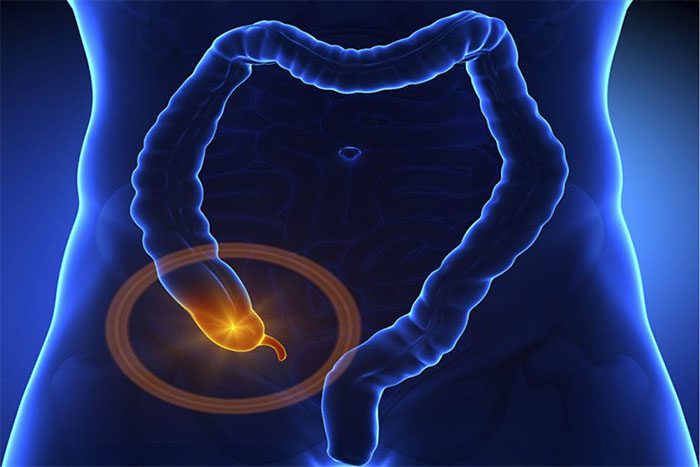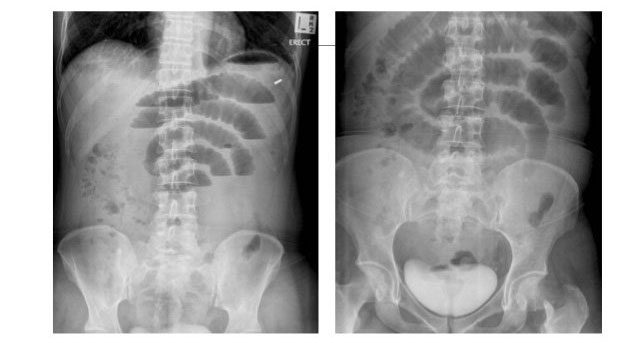Small bowel obstruction is a rare condition, but its severity is only second to acute appendicitis. Therefore, understanding the disease’s situation, causes, and symptoms will help patients cope and have an effective treatment approach for this condition.
Essential Information About Small Bowel Obstruction
1. What is small bowel obstruction?
Small bowel obstruction is a condition where the small intestine is blocked, preventing the passage of substances within it, leading to vomiting, abdominal pain, and constipation. This is one of the most dangerous and unpredictable symptoms, especially in infants and young children. If not detected in time, it can lead to intestinal perforation and the leakage of stomach contents into the abdominal cavity, causing bacteria to spread to various spaces in the body. This can threaten the patient’s life.
2. Causes of small bowel obstruction
Currently, there are many causes of small bowel obstruction, including:
- Extrinsic causes: Adhesions, abdominal hernias, intestinal twisting, abscesses in the abdominal cavity, and hematomas.
- Intrinsic causes: Tumors, strictures, hematomas within the intestinal wall, and inflammatory bowel disease.
- Intraluminal causes: Tumors, gallstones, or foreign objects such as food debris and worms lodged in the intestinal lumen.
Signs and symptoms of small bowel obstruction:
Patients with small bowel obstruction typically experience pain in the abdominal area and bloating. The pain often comes in waves and can sometimes be accompanied by cramping in the epigastric region or around the navel. When obstruction occurs, the abdomen tends to swell due to the reflex of the small intestine.
Patients often experience vomiting and constipation. Vomiting usually happens later, and if fecal matter is present in the vomit, it indicates an obstruction in the distal part of the small intestine. Constipation becomes most apparent when all fecal matter in the lower intestine at the obstruction point is evacuated. Early-stage complete small bowel obstruction can be challenging to diagnose.
If a patient has a partial small bowel obstruction, they may continue to pass gas and have small bowel movements. However, the symptoms of partial or complete small bowel obstruction in the early stages can be quite similar, so careful differentiation is necessary.
When the intestine is obstructed, it becomes less absorptive, leading to the accumulation of fluids in the intestine and increased secretion. Gastric, pancreatic, and bile secretions gradually form and accumulate in the intestinal lumen. These fluids can seep through the intestinal wall, causing the wall to become edematous and possibly leak into the peritoneum.

Intestinal inflammation is a cause of small bowel obstruction.
3. Diagnosis and treatment of small bowel obstruction
Diagnosis of small bowel obstruction
Small bowel obstruction can be diagnosed using the following methods:
Clinical diagnosis: The doctor will examine the patient’s health status through observed signs, auscultation, and palpation.
Paraclinical diagnosis: This includes various techniques, but to get the clearest view, the doctor will order an X-ray.
X-ray imaging: X-ray images of small bowel obstruction show levels of fluid and gas accumulation. A specific sign of obstruction is the presence of air-fluid levels. The amount of air may vary depending on the obstruction’s location. The lower the obstruction, the more air is present if the patient comes in later. When small bowel obstruction occurs, the fluid level is typically located in the middle of the abdomen. X-ray images of the small intestine show wide loops. The mucosal folds of the small intestine run across the width of the intestine. The mucosal folds are densely packed together, except for the ileum. In small bowel obstruction, there is usually little to no air present.

X-ray helps diagnose small bowel obstruction.
Treatment of small bowel obstruction
- Medical treatment: For patients with small bowel obstruction due to adhesions or inflammatory bowel disease.
- Surgical treatment: For patients with complete small bowel obstruction not due to any specific cause or when medical treatment is unsuccessful.
Depression and suicidal thoughts common among high school students during the pandemic
What is spectrophobia? How to overcome the fear of ghosts?
Strange syndrome of hair that cannot combine, disappears on its own when grown up

















































